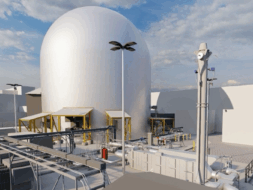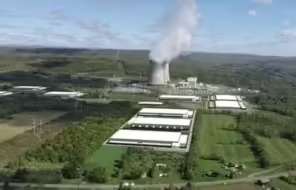The federal government is putting its money where its mouth is when it comes to incentivizing the nuclear fuel pipeline.
This week, the DOE, the Department of the Treasury, and the IRS jointly awarded X-energy’s fuel-focused subsidiary, TRISO-X, a $148.5M tax credit through the Inflation Reduction Act of 2022. The credit is meant to support construction of a tri-structural isotropic (TRISO) fuel production facility in Oak Ridge, TN.
Just to clarify…
- What the credit is: Tangible governmental support that reduces the risk of building the fuel facility for the company and its investors
- What the credit isn’t: A grant. The company isn’t handed the funds directly. Instead, they’ll be applied against the company’s tax burden once it’s spent cash on R&D
“This award is not just an investment in our technology and innovations, it’s a massive step forward for building the supply chain to advance the next generation of nuclear energy,” X-energy CEO J. Clay Sell said in a release. “Strengthening energy security here and around the world requires expanding secure, domestic manufacturing capabilities across the energy sector.”
Trying out TRISO: The safety and resilience of nuclear fuel are top of mind for companies building the next gen of fission reactors as they work toward regulatory approvals and widespread industry adoption. TRISO fuel consists of tiny pieces of coated uranium fuel. The fuel’s structure makes it sturdier in the face of changing temperatures, and it’s also designed to be more efficient than other fuels.
The Oak Ridge facility will produce “pebbles” of TRISO fuel, each consisting of ~18,000 poppy-seed-sized pellets. These can then safely be shipped to reactors wherever they’re needed.
X-energy isn’t the only company planning to use TRISO fuel in its reactors. Kairos Power, which recently received approval from the NRC to build its Hermes demo reactor, is also designing its reactor to use TRISO fuel in partnership with the Los Alamos National Lab.
The road ahead: Construction has not begun on X-energy’s planned fuel production facility, which is projected to cost $300M and start producing TRISO by 2027—a delay from its original 2025 target.
The fuel facility’s production will depend on whether there’s an X-energy reactor to receive pebbles, company spokesperson Robert McEntyre told Knox News. “We basically want to begin making pebbles at a time when we can expect to deliver pebbles for our reactors,” McEntyre said. “We want to manufacture it and ship it directly.”
X-energy is looking to begin construction at its first Xe-100 reactor in Texas in 2026.
Lead Reporter of Ignition





